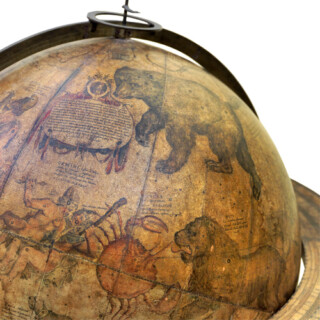Leo Belgicus.
Amsterdam,
Jodocus Hondius,
1611.
Hand-coloured, engraved map, trimmed to neatline, remargined.
430 by 560mm (17 by 22 inches).
2858
notes:
In 1608, the cartographer Hessel Gerritsz (1581-1632) published a new version of the Leo Belgicus with the Netherlands orientated with the west at the top. Again the lion's back follows the coastline, however, this time he is shown walking on all fours (passant), with his head facing south – towards the Spanish threat.
The genesis of this map is somewhat complicated, as no example of Gerritsz' original survives. The waters are further muddied by the fact that Ge...
The genesis of this map is somewhat complicated, as no example of Gerritsz' original survives. The waters are further muddied by the fact that Ge...
bibliography:
H.A.M. van der Heijden, Leo Belgicus: An illustrated and annotated cartobibliography, 2nd ed., (Alphen aan den Rijn: Canaletto, 2006), 15.4.
provenance:








